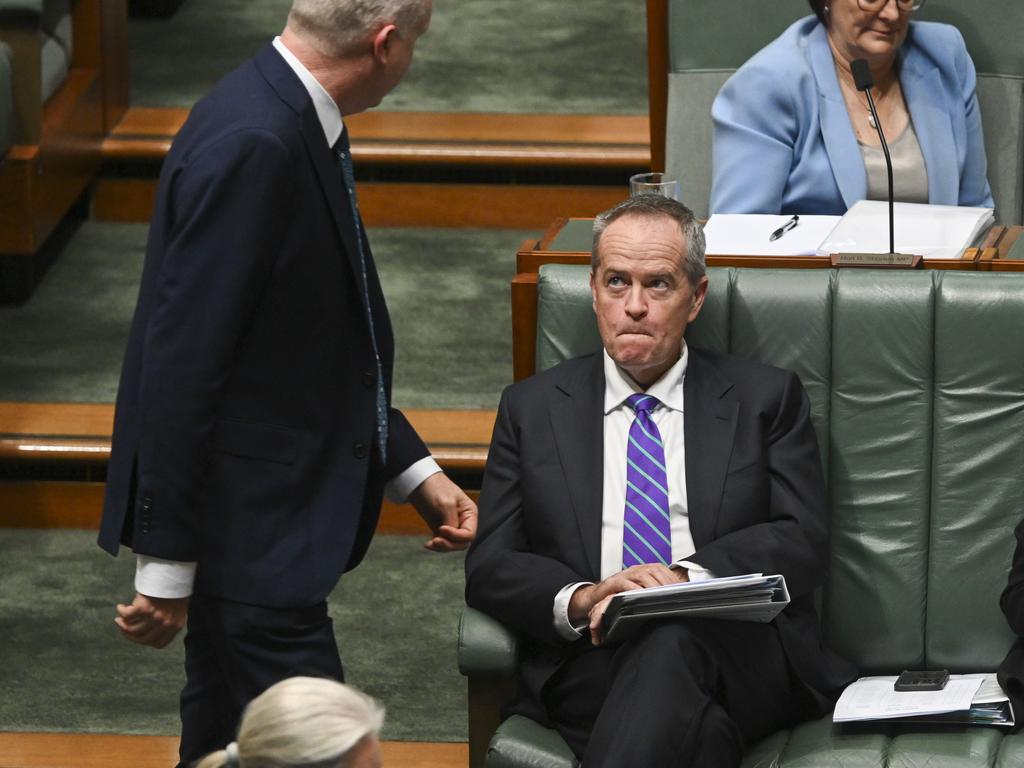Budget gets a pass but with a ‘do better next time’: Grattan Institute
![]Prime Minister Anthony Albanese and Treasurer Jim Chalmers arrive for media interviews at Parliament House in Canberra. Picture: NCA NewsWire / Martin Ollman](https://content.api.news/v3/images/bin/916286abad37eab867b66868a893b431?width=650)
One key test of this budget was whether it would add to inflation. With prices rising by 7 per cent in the year to March and acute concern about the cost of living across the country, the government’s stated objective was to not make the problem worse. The Reserve Bank’s 11th rate hike this cycle, handed down a week before the budget, was a stark reminder of the risks of adding to demand pressures. The verdict? The budget won’t make Reserve Bank governor Philip Lowe’s job any easier but nor will it make it much harder.
New spending measures were largely targeted at the most vulnerable households. Some measures, most notably the energy bill discounts, were designed to deliver cost-of-living relief while also reducing the consumer price index – helpful for managing expectations when inflation is close to its peak.
Over time, more money in the hands of consumers will lead to more demand and therefore higher prices. But the size of the impact is expected to be small. Policy decisions add a net $20bn to the economy over four years. Treasury claimed this was too small to even factor into its forecasts. Two macroeconomists have since estimated the budget will add about 0.1 percentage points to the CPI. Not nothing, but not enough to keep Lowe up at night.
The second test was fiscal responsibility, including how prudently the government managed its revenue windfall. The economy gifted it an extra $146bn over the five-year budget estimates, mainly from additional tax receipts fuelled by the much stronger-than-expected labour market and higher company tax receipts as commodity prices far outstripped Treasury’s assumptions.
One of Labor’s fiscal goals is to “bank” most of the improvements in tax receipts for budget repair. It met this test, banking more than 80 per cent of the externally driven (“parameter”) improvements to the bottom line. The more hard-nosed economists would have liked to see that reach 100 per cent given the ephemeral nature of the budget gift and the broader inflationary pressures.

But others are right to point out it compares favourably to the discipline shown by previous treasurers blessed by good luck. Grattan Institute estimates suggest Jim Chalmers’ achievement in banking more than 80 per cent or more of windfalls – which he did in two budgets – has only been exceeded once in 20 years: Wayne Swan’s effort in 2010 when he banked 93 per cent of the parameter upside as he chased a surplus after the global financial crisis. By contrast, in the 2004 and 2007 pre-election budgets, Peter Costello banked less than 10 per cent of the mining boom’s rivers of gold.
The other (apparent) good news in this year’s budget for fiscal hawks was a profound turnaround in the structural budget position. Rather than years of structural deficits of 2 per cent of GDP, as was projected in the October budget, Treasury is now foretelling smaller and narrowing deficits, reaching close to balance in 10 years’ time. This improvement comes about because government spending is now projected to average 26.4 per cent of GDP over the decade, compared to 27.2 per cent in October.

But economists are right to view this sceptically. Part of the turnaround is real, reflecting lower interest payments on debt because the improvements in the short-term budget position will reduce borrowing. But the other major contributor is the assumption of lower growth in spending on the NDIS. While the government has happily taken the improvement to the bottom line – worth almost $60bn over the decade – there is precious little detail on how it will be done. To borrow the line of the night from economist Chris Richardson: “It’s not policy until you piss someone off.” Probably not time to declare victory on the structural deficit just yet.
Which brings me to the third test: how well the budget delivered for those in deep disadvantage. Many economists have joined the usual suspects in supporting welfare increases in recent years as it has become clear just how inadequate these payments are. As the Business Council has pointed out, the deep poverty people experience on these payments is actually a barrier to work. Again, how you think the government fared probably depends on your criteria. Many are happy to see any improvement. The $40-a-fortnight increase in the single JobSeeker rate and related payments will be only the second material increase in 20 years beyond adjustments for inflation. Similarly, the 15 per cent increase in rent assistance was the biggest in 30 years. But these still leave people well short of what is needed to achieve a basic minimum standard of living. The government still has more to do.
So on the three most pressing tests – inflation, fiscal responsibility, and addressing disadvantage – the government has performed relatively well. Some of the short-term good luck has been used as a down payment to ease the squeeze on the vulnerable. But the government has been responsible by banking most of it – necessary from both a fiscal and an inflation perspective.
What would have garnered a better review from this hard-marking economist? The government could have done more on disadvantage, budget repair and inflation if it was willing to take bolder decisions on reducing spending or increasing taxes elsewhere. And over time, Australia will need a broader set of measures to boost growth. That should give economists plenty to disagree about before the next budget.
Danielle Wood is chief executive of the Grattan Institute and lead author of Grattan’s pre-budget report, Back in black? A menu of measures to repair the budget.







As the dust settles on another budget, you may be left scratching your head as to what to make of it as an economic plan. Economists – contradictory creatures at the best of times – have given different verdicts on its inflationary impacts, its poverty-busting credentials and whether it meets the fiscal responsibility test. What sits behind these different verdicts is less disagreement on the economics, more a difference in marking criteria. But, given budgets are an important economic test for a government, it is worth having a clear picture as to how they fared.